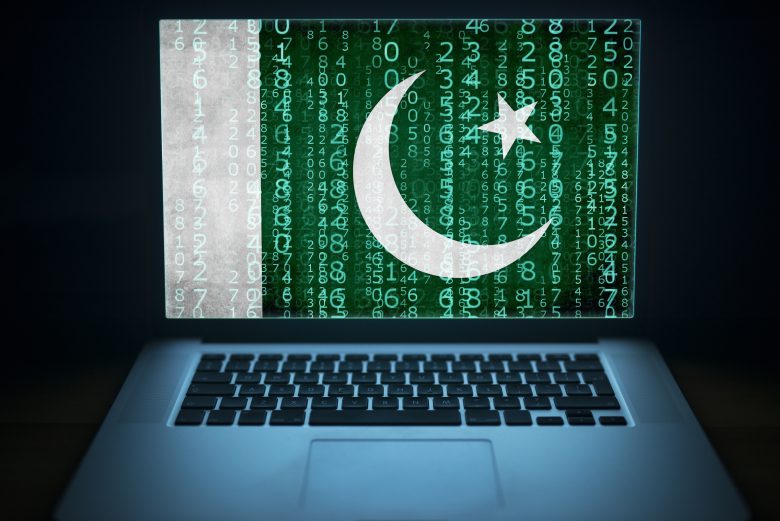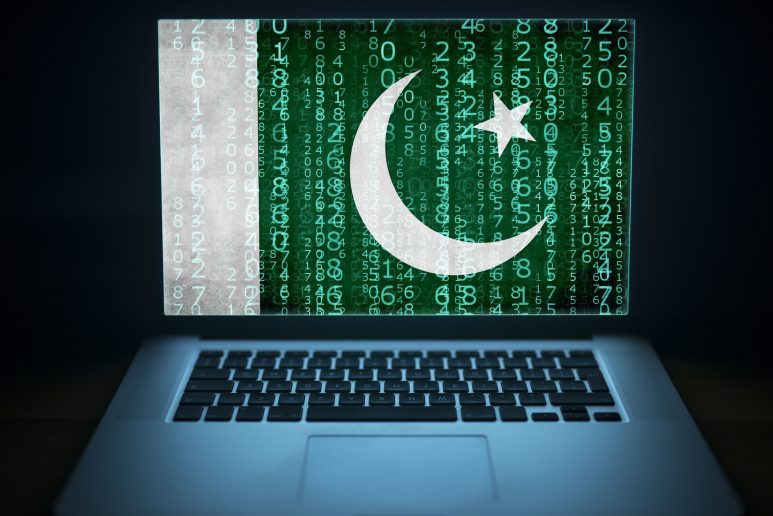By Arsalan Ashraf, Research & Operations Coordinator, Bytes for All (B4A), Pakistan.
The throttling of press freedom in Pakistan is nothing new, with media professionals under constant attack, especially on digital spaces. In some cases, the attacks have included physical threats.
The government’s strict control on reporting around the armed forces, the judiciary, and religion has been unprecedented in the last few years. With the space for journalists to work freely in the country shrinking, they are facing challenges on multiple fronts including abduction, torture, and threats from the authorities.

Tight control and impact on diversity
The government’s tight control on the flow of information on electronic and print media has compelled most journalists to use social media platforms to express their views and opinions. Since most media houses are forced to censor content and broadcast filtered news and views showing the government and military in a positive way, journalists are living in a state of self-censorship. In return, the government has been giving massive advertisements to print and electronic media.
Addressing distrust in the mainstream media and the growing reliance of people on social media , the government is weaponizing laws like the Prevention of Electronic Crimes Act (PECA), social media rules, and controversial amendments to the Pakistan Electronic Media Regulatory Authority (PEMRA) Ordinance, which enables more censorship in the country.
Along with these laws, the government has also made many new proposals to empower law enforcement agencies, including the Federal Investigation Agency (FIA), to silence critical views of government and army policies.
The federal cabinet further passed an amendment that gives more authority to the FIA to prosecute anybody who spreads “rumours and false information against state institutions” on social media platforms. The offense is punishable by imprisonment of up to seven years. The government also proposed the Criminal Laws (Amendment) Act, 2023, which introduces a maximum five-year prison term and fine for anybody who publishes or shares information with the intent to “ridicule or scandalise” the military and judiciary.
The Pakistan Telecommunication Authority (PTA), the country’s telecommunication operator, has filed a massive number of requests to Meta for data, including 69 emergency disclosure requests, and 2,134 Users/accounts requests.
Massive surveillance on journalists and opinion makers
The number reflects the level of surveillance on journalists and opinion makers who voice critical views of government policies.
The National Database and Registration Authority (NADRA) has revealed that it blocked identity cards of over 71,000 users out of which 45,000 were restored after verification, the majority of which are from Khyber Pakhtunkhwa and Balochistan, – provinces with fragile security situations and critics of the federal government.
The Parliamentary Secretary for the Cabinet Division informed the National Assembly about the government’s decision to block approximately 80,000 SIM cards for disseminating fake news, following increasing concerns about misinformation on social media.
Such steps not only spread fear among people who are expressing their views, but also forces them to self-censor.
The year 2024 was the worst in terms of internet censorship and connectivity in the country with over 47 documented internet shutdowns. Incidents included complete shutdowns, throttling and use of firewalls to block certain platforms. While Telegram has been blocked in Pakistan since 2017, the government also blocked X(Twitter) around the time of the controversial general elections in the country in February. A lot of users had posted videos of rigging, irregularities and the state’s alleged abuse of power to silence the voices of journalists and common citizens.
Pakistan faced its first ever complete network shutdown across the country, including both cellular services and mobile internet, on election day. The decision was termed precautionary to avoid a breakdown in law-and-order, but critics claimed it was put in place to suppress the voters of Pakistan Tehreek-e-Insaf (PTI) after a court took away their election symbols months before polling day and they were relying on digital platforms to mobilize voters, media and international communities. The official PTI website and portal was also made inaccessible just two weeks before election day.
A website with similar interface and functionality to impersonate the official PTI candidates’ portal was launched, providing wrong candidates and symbols, createing confusion among voters.
Activists claim the government has been using a Chinese internet firewall to censor political parties, as most of the network shutdowns were witnessed during PTI public gatherings or digital events. Every time an event is announced, all major cities witness throttling and blanket shutdown in the country. With these restrictions, a 253% increase was noticed in the use of VPNs in November.
The government has now started blocking VPNs in the country, and most VPNs are also inaccessible in the country.
A polycrisis
Pakistan is currently in the state of polycrisis where multiple crises intertwine creating a compounded effect on the economic and political situation of the country.
The government’s increased control on the press and internet has resulted in uncertainty, a climate of fear and discomfort in the masses.
The recent decline of Pakistan into the bottom 12% of a global internet speed index not only dented the digital economy but also created an alarming situation for freedom of expression and assembly online. Draconian laws, shutdowns, surveillance and censorship are only making the situation worse and pushing Pakistan into the security state where freedoms are only on paper. It also impacts diversity of views and representation.
Photo from https://www.shutterstock.com/fr/g/Seahawk007
Disclaimer:
The views and opinions expressed in this article are solely those of the author and do not reflect the official policy or position of the Media Diversity Institute. Any question or comment should be addressed to [email protected]

